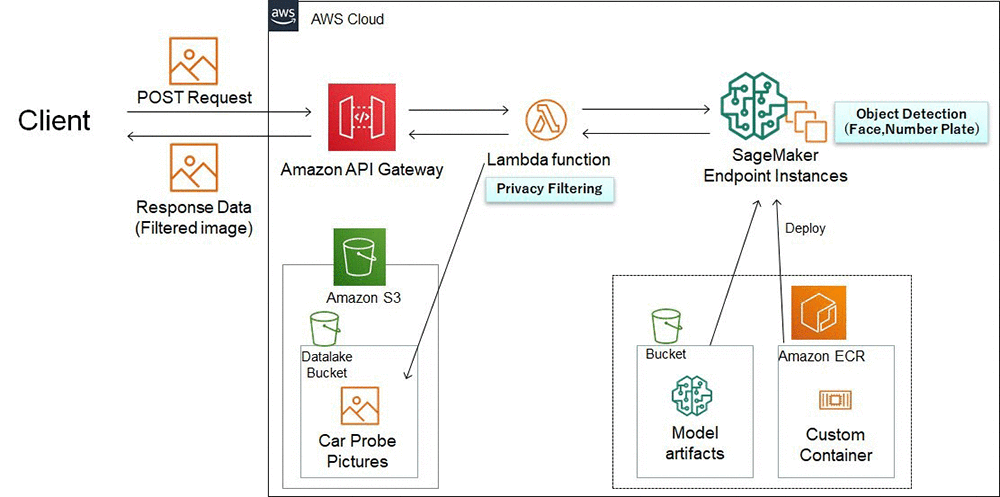
Deep learning in various applications is something that you have probably heard about. It is the technology behind Face ID for Apple's iPhone and Google Photos' tagging feature. It also helps social media companies identify questionable content, and it helps self-driving cars make sense of their surroundings. What is deep learning? How does it work? Let's explore. This article will explain the basic concepts, as well as what it can do for you.
Deep Learning Applications
Deep learning is widely used in many different areas. Deep learning is capable of assisting in everything, from genomic analysis to augmented clinicians. Deep learning can be used in social media. Netflix is one of the most well-known examples, as it uses user behavior to create recommendation systems. Deep learning can also used in the entertainment sector, from OTT platforms to VEVO. The company uses cutting-edge services to produce performance-based insight.

Neural networks
The history of deep learning has been brief. However, many organizations have wasted time and money developing models that were not suited for their applications. While these methods may be useful for certain tasks, there is still room for improvement. These are just a few of the many ways they can be helpful to you. Let's start by discussing what deep learning can do and what it is. Deep learning can be described as the process of learning from data and then combining it with an algorithm.
Reinforcement learning
Deep reinforcement learning (RL) combines ML techniques and models to solve problems. In particular, deep RL models use neural networks. While neural networks are not the best choice for all problems, they are the most powerful and achieve the highest performance. Here are some examples where RL can help in applications. Let's take an example: Deep RL models can learn from their mistakes and adapt to new situations based on continuous feedback.
Image recognition
Deep learning is a method that allows a computer to extract features from images. The algorithm uses a multi-layer hierarchy to find simple features like edges and shapes rather than more complex structures. This technique does have its limitations. It can make serious and dangerous mistakes. These are the disadvantages of deep-learning. 1. Deep learning is not able to understand context
Natural language processing
Natural language processing refers to the process of comparing a sentence with grammar rules. Part of speech is added to words so that syntactic parasers can check for grammar rules. These grammar rules have been implemented using machine learning and deep learning algorithms. IBM Watson Annotator for Clinical Data extracts important clinical concepts from natural language texts. An IBMid, or IBM Cloud account is required to use the tool.

Speech recognition
While deep learning may still be a new field, it is quickly approaching its state-of the-art capabilities in speech recognition. The latest work by IBM and Microsoft researchers, led by Li Deng and Geoffrey Hinton, has already reduced word error rates by 30%. The new deep learning method relies on phonemes, which are the smallest units within spoken language. As phonemes increase in number, so does the difficulty of recognising them all.
FAQ
Are there risks associated with AI use?
It is. They will always be. AI could pose a serious threat to society in general, according experts. Others argue that AI is necessary and beneficial to improve the quality life.
The biggest concern about AI is the potential for misuse. It could have dangerous consequences if AI becomes too powerful. This includes robot dictators and autonomous weapons.
AI could also replace jobs. Many people are concerned that robots will replace human workers. However, others believe that artificial Intelligence could help workers focus on other aspects.
Some economists even predict that automation will lead to higher productivity and lower unemployment.
How do you think AI will affect your job?
AI will replace certain jobs. This includes jobs such as truck drivers, taxi drivers, cashiers, fast food workers, and even factory workers.
AI will create new employment. This includes business analysts, project managers as well product designers and marketing specialists.
AI will make it easier to do current jobs. This applies to accountants, lawyers and doctors as well as teachers, nurses, engineers, and teachers.
AI will improve efficiency in existing jobs. This applies to salespeople, customer service representatives, call center agents, and other jobs.
What is the most recent AI invention?
Deep Learning is the most recent AI invention. Deep learning is an artificial Intelligence technique that makes use of neural networks (a form of machine learning) in order to perform tasks such speech recognition, image recognition, and natural language process. Google created it in 2012.
Google is the most recent to apply deep learning in creating a computer program that could create its own code. This was accomplished using a neural network named "Google Brain," which was trained with a lot of data from YouTube videos.
This enabled it to learn how programs could be written for itself.
IBM announced in 2015 the creation of a computer program which could create music. Another method of creating music is using neural networks. These networks are also known as NN-FM (neural networks to music).
Statistics
- A 2021 Pew Research survey revealed that 37 percent of respondents who are more concerned than excited about AI had concerns including job loss, privacy, and AI's potential to “surpass human skills.” (builtin.com)
- Additionally, keeping in mind the current crisis, the AI is designed in a manner where it reduces the carbon footprint by 20-40%. (analyticsinsight.net)
- The company's AI team trained an image recognition model to 85 percent accuracy using billions of public Instagram photos tagged with hashtags. (builtin.com)
- By using BrainBox AI, commercial buildings can reduce total energy costs by 25% and improves occupant comfort by 60%. (analyticsinsight.net)
- In the first half of 2017, the company discovered and banned 300,000 terrorist-linked accounts, 95 percent of which were found by non-human, artificially intelligent machines. (builtin.com)
External Links
How To
How to set up Amazon Echo Dot
Amazon Echo Dot (small device) connects with your Wi-Fi network. You can use voice commands to control smart devices such as fans, thermostats, lights, and thermostats. To listen to music, news and sports scores, all you have to do is say "Alexa". You can ask questions and send messages, make calls and send messages. Bluetooth headphones or Bluetooth speakers can be used in conjunction with the device. This allows you to enjoy music from anywhere in the house.
You can connect your Alexa-enabled device to your TV via an HDMI cable or wireless adapter. For multiple TVs, you can purchase one wireless adapter for your Echo Dot. You can also pair multiple Echos at one time so that they work together, even if they aren’t physically nearby.
Follow these steps to set up your Echo Dot
-
Turn off your Echo Dot.
-
The Echo Dot's Ethernet port allows you to connect it to your Wi Fi router. Turn off the power switch.
-
Open the Alexa app for your tablet or phone.
-
Select Echo Dot in the list.
-
Select Add New Device.
-
Choose Echo Dot among the options in the drop-down list.
-
Follow the instructions.
-
When prompted, type the name you wish to give your Echo Dot.
-
Tap Allow Access.
-
Wait until Echo Dot connects successfully to your Wi Fi.
-
Do this again for all Echo Dots.
-
Enjoy hands-free convenience